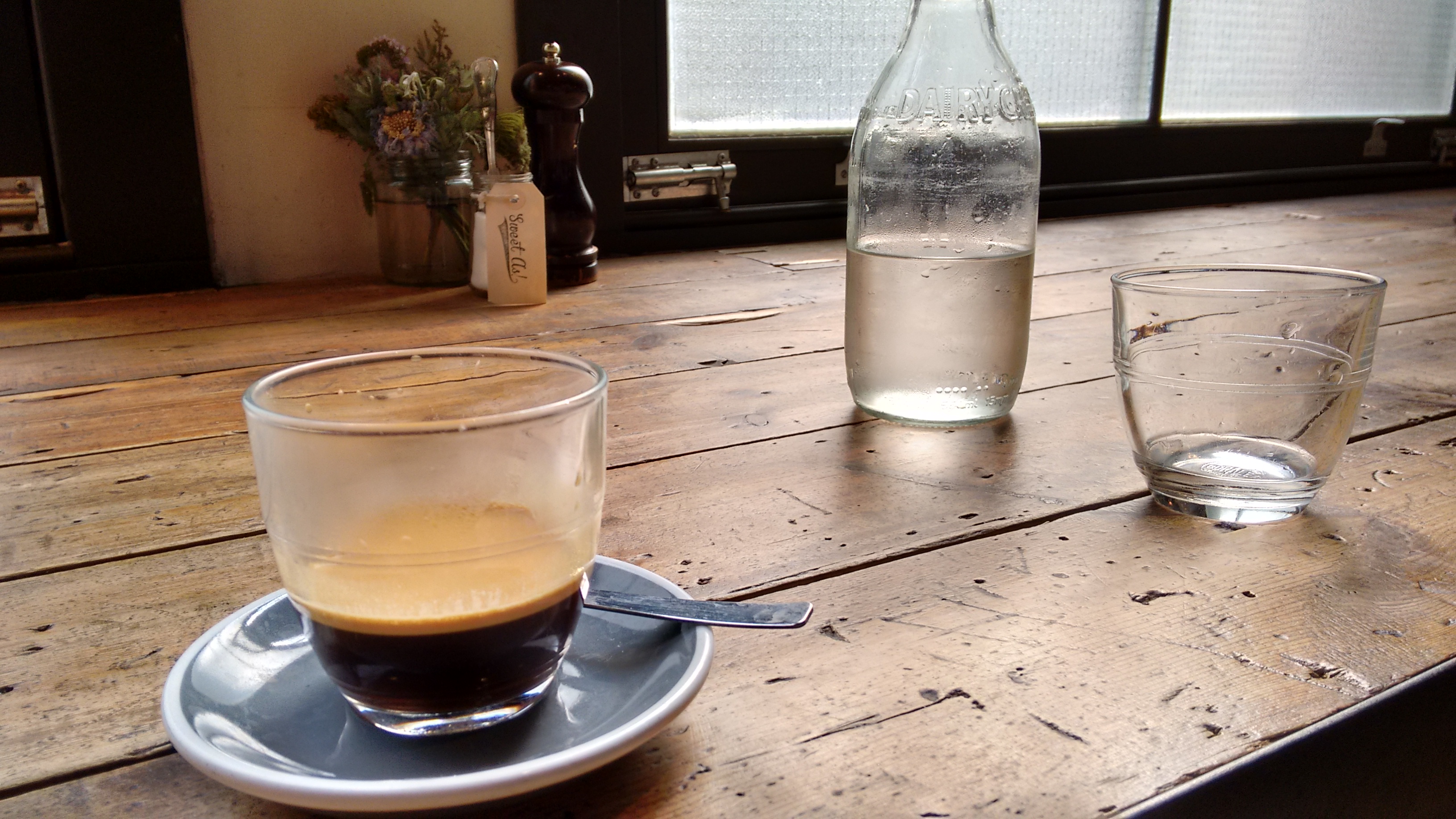Coffee English

Coffee is not just an important part of my life, but plays a key role for our society. You can find a very readable history of coffee here. In this post, I want to discuss some coffee-related vocabulary and pronunciation. This will help you get ready for your next visit to the coffee shop, or a discussion with coffee buffs. Due to the enormous richness of the topic, I’m sure that I will not cover everything.
Types of coffee
While I have moved on to espresso a long time ago, many people are still perfectly happy with drip coffee (also drip brew or filtered coffee), which is prepared by letting hot water trickle through a filter with ground coffee beans. Surprisingly, despite the recent boom of high-quality coffee shops, instant coffee made from hot water and a powder obtained by drying brewed coffee beans is still very popular. Two slightly more sophisticated varieties are the French press and the moka. A moka is similar but not identical to an espresso. It is made with lower water pressure and hence has no crema (as opposed to cream and creme) and has a less oily and thinner appearance. Finally, there is of course an almost endless variety of espresso-based drinks such as the latte and the macchiato. Note that these drinks are made with so-called frothed milk and have milk froth on top. All of these varieties can also prepared by using decaffeinated beans. For example, you may order a decaf cappuccino.
Types of coffee makers
The generic term for a device that makes coffee is coffee maker or coffee machine. Among the most popular choices are the electric drip coffee maker, the moka pot, the French press, and the single-serve coffee maker that uses coffee packs, pods, or capsules. The key piece of equipment for coffee shops and enthusiasts is however the espresso machine in combination with a coffee grinder. While I personally prefer a manual machine, there are also semi-automatic machines (which adjust the water volume) and super-automatic machines (which also grind automatically). In contrast to the super-automatic case, manual and semi-automatic machines require you to grind the right amount of coffee, put the coffee grind into the portafilter, and tamp it into a puck using a tamper.
Pronunciation pitfalls
First, the word espresso is sometimes mispronounced as expresso (see also this post), that is, [ekˈspresəʊ] instead of [eˈspresəʊ]. More amusingly, the substance that makes so many people drink and crave coffee is called caffeine. Its correct pronunciation is [ˈkæfiːn] (listen here). German native speakers often confuse caffeine with the German term Coffein, which they pronounce essentially identical to the English word coffin (listen here). Clearly, this may raise some eyebrows among English native speakers. In fact, I believe this potential confusion is the reason why the word caffeine is used in English in the first place.
OK, I think it is time for another espresso …